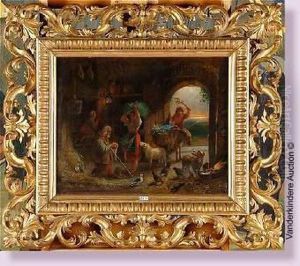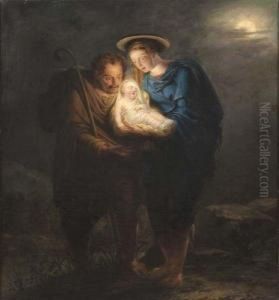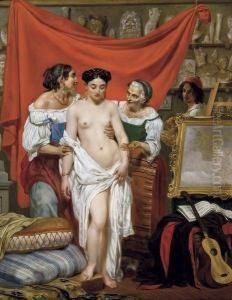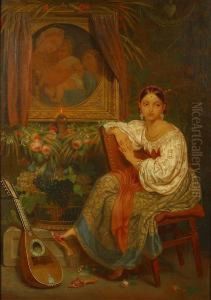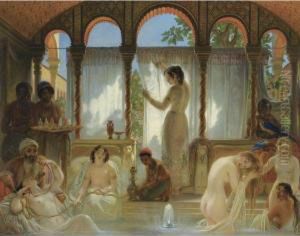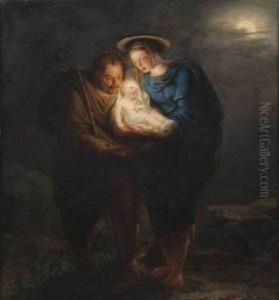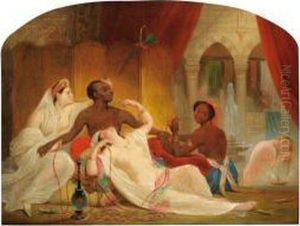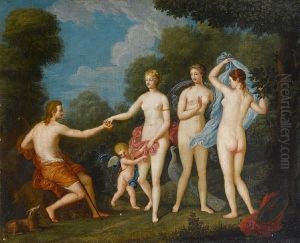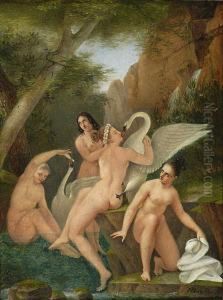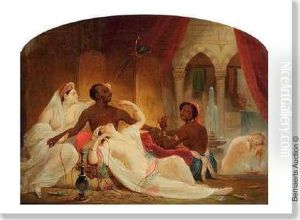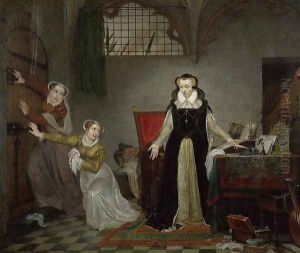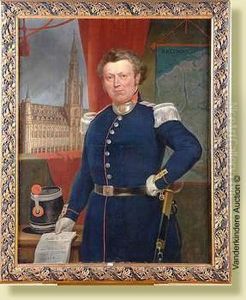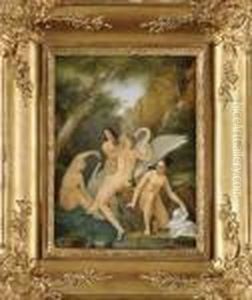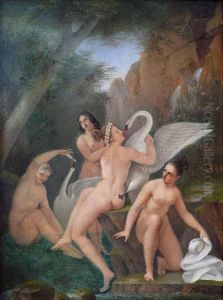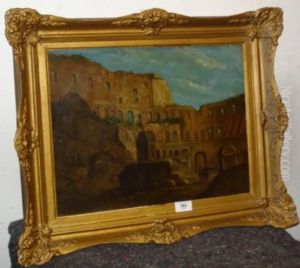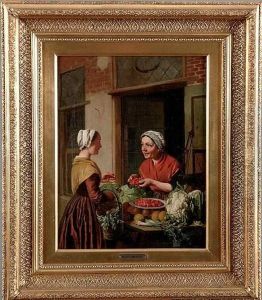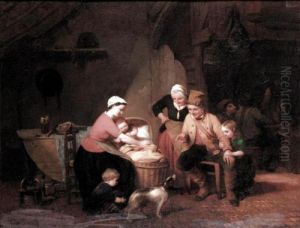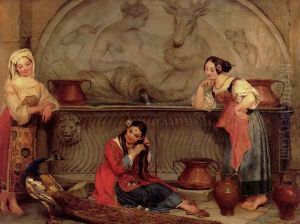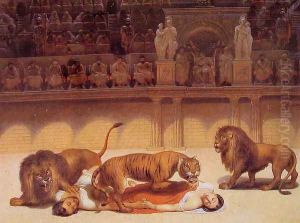Philippe Jacques Van Bree Paintings
Philippe Jacques Van Bree was a prominent Belgian painter born on January 13, 1786, in Antwerp. His artistic journey began under the tutelage of his older brother, Mattheus Ignatius Van Bree, who was a well-known historical painter and the director of the Antwerp Academy of Fine Arts. Philippe's early exposure to the arts and his brother's influence were instrumental in shaping his pursuit of a career in painting.
Van Bree showed a keen interest in the arts from a young age and honed his skills in drawing and painting, which allowed him to develop a strong foundation in the Neoclassical style, which was popular during his time. His talent was recognized, and he was awarded a scholarship by the Antwerp Academy to further his studies in Paris. There, he became a student of the famed French painter Jacques-Louis David, who was a leading exponent of Neoclassicism. Under David's guidance, Van Bree was able to refine his technique and immerse himself in the classical traditions of French painting.
In 1804, Van Bree won the prestigious Prix de Rome, which afforded him the opportunity to travel to Italy and study the masterpieces of the Renaissance and classical antiquity. His time in Italy had a profound impact on his artistic development, as he was deeply influenced by the works of Italian masters. After his stay in Rome, Van Bree traveled extensively throughout Italy, drawing inspiration from the rich artistic heritage found there.
Van Bree returned to Belgium in 1811 and began to establish himself as an important figure in the Belgian art scene. He was known for his historical paintings, which often depicted scenes from classical mythology, the Bible, and Belgian history. His works were characterized by their technical proficiency, attention to detail, and the use of dramatic lighting to evoke emotion. Van Bree was also an accomplished portrait painter, and his services were sought after by the elite of Belgian society.
Throughout his career, Philippe Jacques Van Bree was actively involved in the artistic community. He was a member of several art societies and contributed to the development of the arts in Belgium. In 1830, after the Belgian Revolution, he played a role in the formation of a new art academy in Brussels, where he also served as a professor. His contributions to Belgian art were significant, and he helped to foster a sense of national identity through his works.
Van Bree continued to paint and teach until his later years, leaving behind a legacy of works that are still admired for their elegance and historical significance. He passed away on February 16, 1871, in Brussels, having made a lasting impact on the Belgian art world. Today, Philippe Jacques Van Bree's paintings can be found in museums and private collections, where they continue to be celebrated as examples of fine Neoclassical art.
